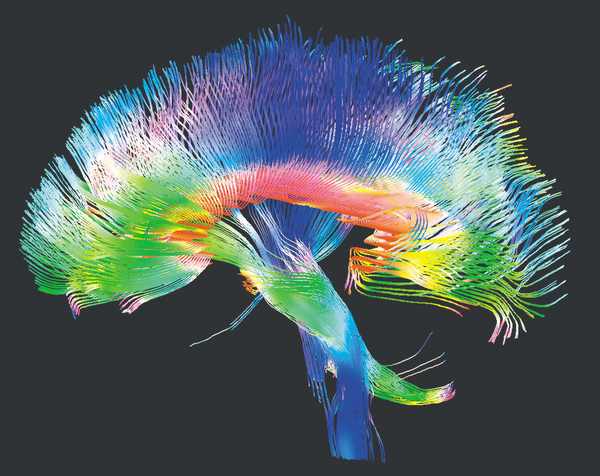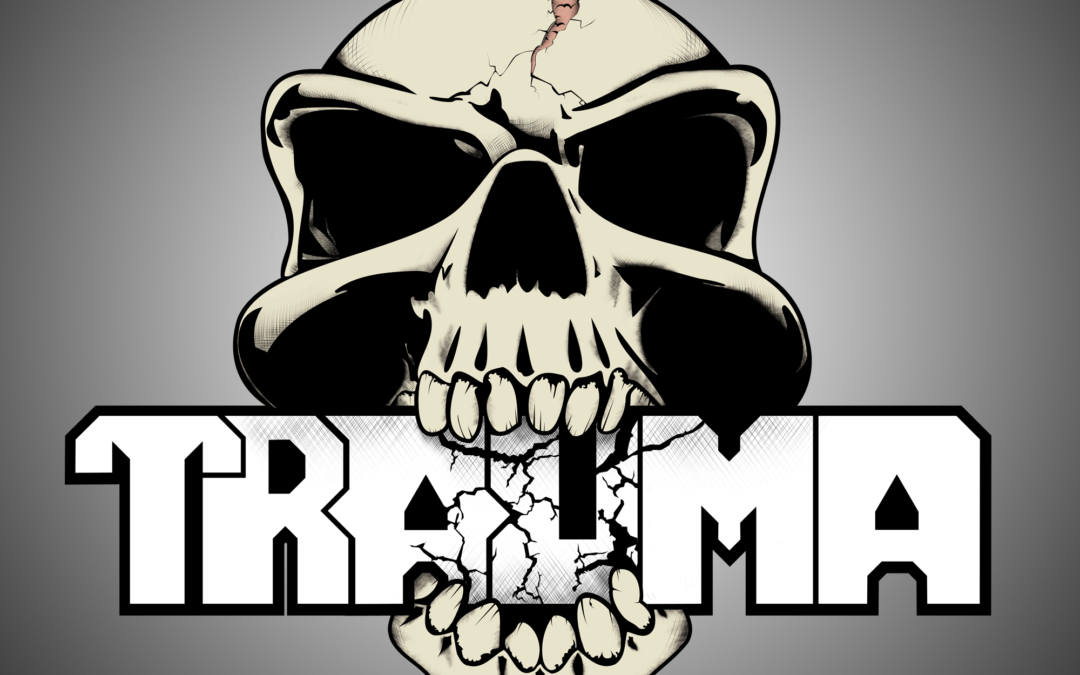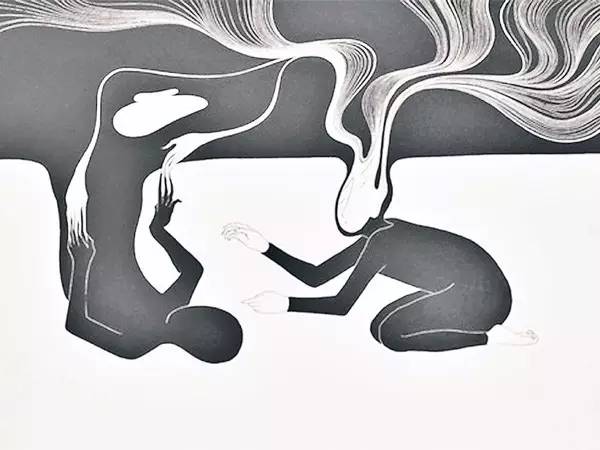
by yumintanlive | Sep 25, 2019 | Meditation, Psychology & Mental Health
I remember my friend asking me this when we were chatting one day, “Meditation? You mean we can solve problems by just sitting down?”. Then I just smiled because it is not something that can be explained in such simple terms. My friend’s question has also reflected a misunderstanding that the majority of people have towards meditation.
There are many kinds of meditation, and you don’t always have to be sitting down. Meditation is a way of managing our thoughts. When we are practicing meditation, we might appear not to be doing anything, but certain parts of our brain are actually already undergoing changes because of our meditation. The way we think, perceive and feel will also change accordingly.
Meditation is already being widely used in psychiatric treatment in the US, especially for mental illnesses caused by trauma, with the most commonly known illness being post-traumatic stress disorder (PTSD). Meditation has also proven to be very effective in treating anxiety, depression, addiction, obsessive compulsive disorders, as well as anger management.
American Veterans (AMVETS) began to introduce the practice of meditation as part of their trauma therapy for war veterans over the last few years. Many research results have shown that meditation has substantially reduced a variety of PTSD-related symptoms. Some of the major trauma treatment research centers in the US have also begun to provide trauma-related meditation training programs for psychiatrists so that they can offer more alternatives for patients.

What is Meditation?
Meditation is a method of managing and training our thoughts. We can classify meditation into two major categories based on the difference in their points of focus:
The first category is Focus Attention Meditation. The practitioner would focus his attention on a single object, such as breathing, chanting, frame of mind, a particular part of his body etc. For example, the meditation as part of Kundalini yoga belongs to this category. As the practitioner improves over time, his concentration will become more focused and stable, and won’t get distracted easily.
The second category is Open Monitoring Meditation. The practitioner will observe his surrounding environment and his own self (thoughts, feelings, memories etc.) with an open mind, without being judgmental or inflexible. The aim of this is to help the practitioner achieve a state of total emptiness, so that he won’t easily fall into any instinctive or habitual responses. The commonly known practice of mindfulness belongs to this category.
The Use of Meditation in Trauma Recovery
Bruce Perry, a psychiatrist, breaks up the human brain into four levels according to the time sequence in which the brain develops and the complexity of the brain’s functions, namely brain stem, diencephalon, limbic system, and frontal cortex.
The brain stem is at the lowest level and the frontal cortex is at the highest level. The lowest level with the simplest structure regulates our basic skills and is developed first. The highest level with the most complex structure regulates the more complex functions and is developed at a later stage. Since the brain stem is responsible for regulating our breathing, heartbeat, blood pressure, as well as controlling our body’s automatic survival function, it is developed the earliest. The frontal cortex controls our high-level functions such as logic, language, risk assessment and concentration, it is only fully developed at around the age of 20.
In my article “Understanding Brain Structure Through Trauma”, I mentioned that “the smooth operation of the brain stem is extremely important for the development of the frontal cortex”. Since the brain stem of people with PTSD is already seriously damaged, talk therapy will only have limited effectiveness because their brain is mainly focused on survival rather than logic.
According to Bruce Perry, it is possible to cure and strengthen the function of the brain stem through providing repetitive and pattern activities.Such repetitive and pattern somatosensory activities include dancing, breathing, meditation, yoga etc. These activities can greatly reduce anxiety, impulsiveness and other trauma-related symptoms.
Furthermore, research has shown that there was an obvious reduction in the volume of brain cells in the amygdala for a normal person who continuously practiced meditation for eight weeks, therefore his fear, stress and anxiety have also eased substantially. The thickness of his hippocampus cortex will increase, so his learning ability, memory and creativity will also improve accordingly. Meditation can change the way we think, our perceptions and feelings through changing our brain’s structure, thereby improving our mental health. So even if you don’t have trauma-related or other psychiatric illnesses, practicing meditation can also have many benefits.

How to Develop a Meditation Routine?
When we mention meditation, many people’s first reaction would be that they don’t have time. Firstly, in my opinion, meditation is the “me” time that we should leave for ourselves every day. Venerable Master Hsing Yun is 89 years old and has almost lost his eyesight by now. In one of his interviews, he was asked if he gets tired from being so busy at such an old age. The master answered, “Being busy is also a kind of training, being busy can accomplish a lot of things. Try to remain calm even when you’re busy. As long as you feel calm, your physical exhaustion will recover after some rest. You can achieve anything if your heart is at peace.”
In fact, if we can just eat while we’re eating, and just have a meeting during a meeting, we can remain in a state of meditation all the time. However, in reality, we always tend to think about where we should go after our meal instead of paying attention the true flavors of our food; we often also tend to worry about the report that we’re going to present to our boss at meetings. This is why our hearts are never “at peace”, so how can our hearts not be tired at the end of each day?
Our daily meditation practice is the time that we leave for hearts to train and manage our emotions and thoughts.As long as we can allow a bit of time each day to meditate, go for walks, take deep breaths, chant or practice other meditation methods, we will gradually be able to focus and relax even when we are busy with our everyday tasks.
Choosing the meditation method that is suitable for yourself is very important, this will help you make it become a habit.Some people may feel at peace more easily in a quiet environment, so methods such as walking, breathing and meditation are more suitable for them. People who get distracted easily may find methods such as chanting, body movements and meditation with instructions or music more helpful when trying to achieve a state of peace. I would suggest you to try out different meditation methods, and then decide on the method that you like before you begin in depth practice.
Meditation is not restricted by time and place. As long as you want to, you can meditate in any situation.However, a designated environment and time will help you enter a state of peace more easily and help you establish meditation as a good habit, such as building your own meditation “space”. It doesn’t necessarily have to be a big and solemn space; just enough to put your favorite cushion, a beautiful candle, a portrait that inspires you, or a book that you like etc. If you can go back to the same place to practice meditation each day, you will feel at ease and relaxed.

Furthermore, if you incorporate meditation into your everyday routine,such as meditation before breakfast, after you come home from work, or before you go to sleep at night, this will help make it a habit. Try to not meditate after a big meal because your blood circulation will concentrate in your digestive system and it will be very difficult to focus. Doing neck and back stretching exercises or yoga poses before meditation can help relax your muscles and increase blood circulation, thereby making it easier to focus during meditation and enter a state of peace. At the end of meditation, spend three to five minutes to totally relax, have a cup of hot tea, have a snack, or simply lie down. Our consciousness will reconnect with our body and get on with the new tasks. Now let’s go back to my friend’s question, “Meditation? You mean we can solve problems by just sitting down?”. I think meditation can help you understand your intentions and thoughts. Just like a domino effect, if you already know that you will cause a series of reactions by pushing the first tile, perhaps you will be wiser and more cautious before you choose whether or not you should do something. Sometimes not doing something might be the better choice. So based on this point, perhaps we can really solve problems by just “sitting down”.
References:
Hölzel BK1, Carmody J, Vangel M, Congleton C, Yerramsetti SM, Gard T,& Lazar SW.(2011). Mindfulness practice leads to increases in regional brain gray matter density. Psychiatry Res, 191(1):36-43.
Perry, B. D. (2009). Examining child maltreatment through a neurodevelopmental lens: Clinical applications of the neurosequential model of therapeutics. Journal Of Loss & Trauma, 14(4), 240-255.
Steinberg, C. A., & Eisner, D. A. (2015). Mindfulness-based interventions for veterans with posttraumatic stress disorder. The International Journal Of Behavioral Consultation And Therapy, (4), 11.
Van der Kolk, B. (2005). Developmental trauma disorder: Towards a rational diagnosis for children with complex trauma histories. Psychiatric Annals, 35,401-408.
Waechter, R. , & Wekerle, C. (2014). Promoting Resilience Among Maltreated Youth Using Meditation, Yoga, Tai Chi and Qigong: A Scoping Review of the Literature. Child And Adolescent Social Work Journal, 32(1), 17-31.

by yumintanlive | Aug 28, 2019 | Psychology & Mental Health
What Is Trauma?
Bessel van der Kolk, a US psychiatrist, defines trauma as an experience or disaster that leaves people in a state of helplessness and terror, thereby losing the ability to deal with the problems, threats and disasters in everyday life. Traumatic incidents can cause profound and lasting changes in our physiology, emotions, cognition and memory, as well as cutting off the connections between these four components.
Trauma can be classified as one-off trauma or continuous and repetitive trauma. One-off traumas include serious accidents (car accidents, robbery etc.), natural or man-made disasters (earthquakes, tsunamis etc.), terrorist attacks etc. Continuous and repetitive traumas include long-term sexual abuse, physical abuse (physical violence), emotional abuse (verbal abuse and control), serious illnesses, wars etc. Both one-off traumas as well as continuous and repetitive traumas can cause serious psychological and physical harm for the survivors and witnesses of traumatic incidents.

What Is Post-Traumatic Stress Disorder (PTSD)?
Not all traumatic experiences will lead to trauma response or trauma-related illness or diagnoses.
After a trauma, people will become nervous, anxious and will even have nightmares. These are all normal reactions to traumatic incidents. Once they spend some time recovering and adjusting with the help from family and friends, the majority of people will be able to get on with their lives again. However, a small portion of people will develop psychological illnesses relating to the trauma and the most commonly seen illness is called post-traumatic stress disorder (PTSD).
The US Diagnostic and Statistical Manual of Mental Disorder (DSM-5) noted that the symptoms of PTSD include: (1) nightmares and intrusive memories where sufferers will experience flashbacks of the traumatic incident again (2) avoiding people, incidents, objects, places and scenes that are related to the traumatic incident (3) pessimistic thoughts and feelings eg. not trusting people around them, not showing interest in things that happen around them, blaming themselves etc. (4) excessive arousal and reactivity eg. being impatient, aggressive, impulsive, overly alert, finding it difficult to focus etc. Sufferers can only be diagnosed as having PTSD if such symptoms persist for at least one month.

How Trauma Can Cause A “Short Circuit” In Our Brain
According to Joseph LeDoux, a neurologist who conducted research on how our brain processes emotions, our brain has two systems which process our emotions, namely high road and low road. These emotion-processing systems are especially important to our ability to survive.
As an external danger signal enters our brain, it will enter the low road first. The low road has a tissue called amygdala which will cause our body to become more tense and alert so that we are ready to make an emergency response. This is the renowned fight or flight response mechanism. It is an unconscious channel and doesn’t contain any contextual messages. It is very quick but lacks details.
Then the danger signal will enter the high road – cortex (sensory cortex, frontal lobe and temporal lobe storage system). The main function of the cortex is to assess and analyze danger signals, and then send this signal to the amygdala to confirm whether or not this danger signal will be a threat to us. If it won’t pose as a threat, the amygdala will send a signal to relax our body.
For example, when you are walking in a zoo one day, you suddenly notice a tiger walking towards you. Your body will instinctively enter into a very tense condition, you will start to sweat and your heart will begin to race (danger signal has reached the amygdala). As you are about to flee the scene, you suddenly realize that the tiger is locked up inside a cage (danger signal has reached the cortex). Once you realize there is nothing to be scared of, you let out a breath of relief, your body will relax and you will decide to keep walking around the zoo.
The difference between normal people and sufferers of PTSD is that when normal people receive a danger signal, after the signal enters the low road, it will be able to enter the high road so that an assessment can be made as to whether or not it is dangerous, then our body can respond accordingly. But as for sufferers of PTSD, the danger signal will get stuck in the low road and won’t be able to enter the high road where it will be assessed. So their body will always remain in an emergency response condition eg. increasing heart rate, breathing difficulty, anxiety, paralyses etc.
In our previous example, if you have been chased by a tiger before and almost lost your life (traumatic incident) and you haven’t recovered from that incident, when you see a tiger at the zoo again, it is very likely that you will immediately become paralyzed. Your mind will become a total blank (the cortex is unable to rationally analyze the danger signal), so you won’t be able to calm yourself down. The false threat will become a real threat to you.

For sufferers of PTSD, survival is their core aim. Everything in life can trigger memories of their trauma eg. hearing the song that was being played when the car accident happened, a similar smell as that of the clothes of your perpetrator, having a nightmare that is related to your trauma etc. This can cause the victims to lose control and feel that they have gone back to the scene of their trauma because their danger signal is stuck in the low road again.
Trauma will also seriously affect the internal order of the brainstem. Brainstem, also known as the survival brain, is responsible for controlling our breathing, heartbeat, blood pressure etc. It plays a vital role in keeping us alive. Brainstem also controls our body’s instinctive automatic survival function. In order to effectively perform high-level functions such as languages, social and emotional interactions, create inventions and innovations etc., the functional network which supports our basic needs must remain in good condition. However, trauma can disrupt the internal order of our brainstem, thereby making people feel anxious, impulsive and disoriented. It will then be very difficult for people to develop social skills, improve self-esteem, participate in creative and innovative training programs and thereby benefit from such activities.
References:
American Psychiatric Association (2010).DSM-5
Brendtro, L. K. (2015). Our resilient brain: Nature’s most complex creation. Reclaiming Children & Youth, 24(2), 41-49.
MacKinnon, L.(2012). The neurosequential model of therapeutics: an interview with Bruce Perry. Australian & NewZealand Journal Of Family Therapy, 33(3), 210-218.
Perry, B. D. (2009). Examining child maltreatment through a neurodevelopmental lens: Clinical applications of the neurosequential model of therapeutics. Journal Of Loss & Trauma, 14(4), 240-255. Dealing with the Effects of Trauma-A Self-Help Guide SAMHSA http://www.samhsa.gov
Saxe, G. N., Ellis, B. H., & Kaplow, J. B. (2007). Collaborative treatment of traumatized children and teens [electronic resource] : the trauma systems therapy approach /
Glenn N. Saxe, B. Heidi Ellis, Julie B. Kaplow. New York : Guilford Press, [2007].
Van der Kolk, B. A. (2014). The body keeps the score : brain, mind, and body in the healing of trauma. New York : Viking, [2014].








